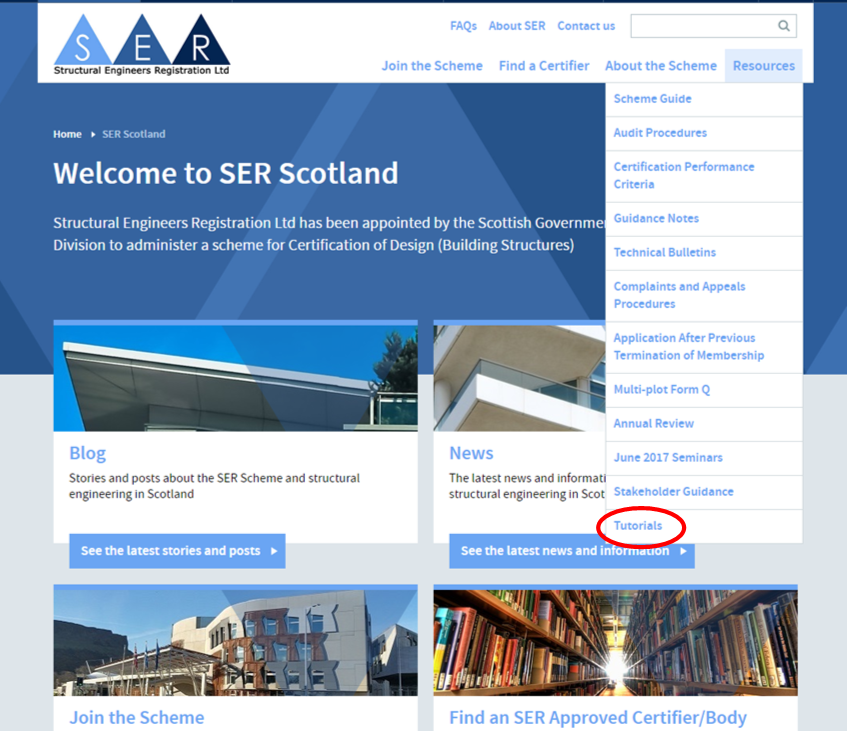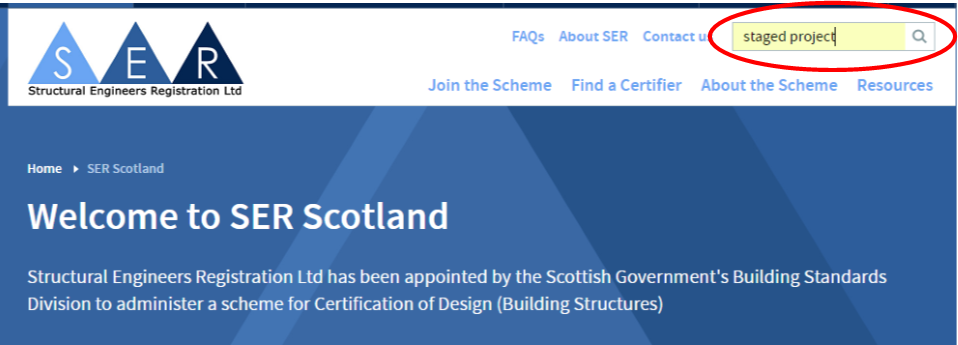This is just a short blog to confirm that have now added all our existing tutorials to the ‘Resources’ section of the SER website. When we were organising the new site in advance of its October 2016 launch, we made the decision to put each tutorial on the page of the website most relevant to it; for example the ‘Generating Additional Stage(s) to an Existing Project’ tutorial can be found at the beginning of the process for generating an additional stage. Additionally, Certifiers can access all tutorials via a dedicated section under ‘Certifier Actions’. However, as we added more and more tutorials, we became aware that this was all a little unintuitive, and that many people found it difficult to find the help they needed on the site.

We have not deleted the tutorials from their original locations, but adding them to the Resources section allows for a significantly improved user experience in several ways. Firstly, anyone that is on the SER site can now access the tutorials, even if they are not an SER member. Secondly, and perhaps most importantly, the tutorials are now searchable using keywords entered into the search bar in the top right hand corner of the website:

The example below shows the results for the search term ‘staged project’ as above:

From here you will be able to access all tutorials that mention ‘staged project’ (as well as results from elsewhere on the site such as Guidance Notes).
As the volume of tutorials grows, we will sub-divide them into categories within the Resources section to make it easier to find the relevant tutorial. Our eventual aim is to have pretty much every imaginable process someone would want to use covered by a clear visual tutorial. To achieve this, and to ensure that the section meets your needs, we have two favours to ask of anyone that regularly uses the SER website:
- Please let us know of any tutorials you would like us to add. These can be as minor or as trivial as you like. Do you always go to the wrong section when looking for something? Not sure what something means? Let us know! We envisage many of the future tutorials being as short as 1-2 slides, so no process will be viewed as too insignificant.
- The search facility does not search the text in the actual tutorial slide show, but instead searches the introductory text that we have added above each slideshow. We need to ensure that this text is clear enough that people can find what they are looking for quickly and easily. Therefore if you search for a tutorial using a particular term, and are not able to find the tutorial you are looking for via the search results, please let us know so we can amend the tutorial’s introductory text.
Creating such a potentially large volume of tutorials is a fairly hefty job, so please bear with us. We really hope that in the coming months you will find these additions make the site easier to navigate and quicker to find the help that you need.